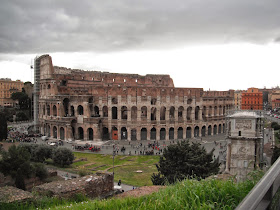After a recent viewing of
The Grand Budapest Hotel (which I LOVED -- who knew Ralph Fiennes was hilarious?) I was searching the internet for background of the movie. I was delighted to read that director Wes Anderson was inspired by the novels of Stefan Zweig. I had an unread copy of
The Post-Office Girl on my TBR shelves, so it seemed serendipitous, so I put it in my carry-on bag for my recent European vacation (OK, Austria is not the same as Italy, but I just wasn't in the mood for
I, Claudius.)
I've not always had good luck with NYRB Classics -- sometimes I love them, and last year, I bought two that I disliked so much, I returned them the same day I bought them. But
The Post-Office Girl is a real keeper.
The story begins with the eponymous post-office girl, Christine, a young twentysomething girl whose youth is being wasted in a tiny Austrian town after the Great War. She's eking out a pretty miserable existence, caring for her ailing mother and just scraping by, since her father lost his entire business during the war years. Her dull life takes an exciting turn when, out of the blue, she receives a telegraph transmission at the post office that is actually for her, which has never happened before. Apparently, she has an aunt who ran off to America years before. She's now visiting Europe with her wealthy husband, and wants to reconnect with the family. Christine's mother is too ill, so instead, Christine uses some vacation time to visit her in an Alpine resort town, and her life is changed forever.
At first, this is like an amazing Cinderella story. Christine blossoms in the mountain air, her aunt buys her clothes and gives her a makeover, and she's swept up in to the hotel society. But naturally, it's all too good to be true, and after a series of misunderstandings, Christine's aunt drops her and she's plunged back into her dismal everyday world, stunned. Now that she's experienced a taste of the good life, nothing in her tiny provincial time will ever satisfy her.
In the second portion of the book, Christine tries to change her life, and meets a disillusioned war veteran who is bitter and just as dissatisfied as she is. Without giving away any more of the story, I'll just say that the story took a turn that I didn't expect
at all.
I loved this book. Christine and the other characters were so real, and I thought it was a really interesting portrait of life between the wars for regular people. Most of the inter-war books I've read have been English, and life probably turned out very differently for other Europeans in that time period.
My one complaint about this book is that it ends abruptly -- it seemed so unfinished, like there was a third portion that was missing. After reading it, I found out that the novel was published posthumously, in 1982. Stefan Zweig was a very famous writer during the 1920s and 1930s. During World War II, he was exiled by the Nazis, and eventually settled in Brazil. Like Christine, he became disillusioned and depressed, and he and his second wife committed suicide in 1942. I'm not sure if the novel ends that way deliberately.
Anyway, I loved this book and now I'm intrigued and want to read more of the works of Stefan Zweig. I'm counting this as my Classic by an Author That's New To Me for the
Back to the Classics Challenge. (I was thinking about counting as my Classic in Translation, but I will probably read a Zola novel for that one).
Has anyone else read anything by Stefan Zweig? Which of his books should I read next? And who loved
The Grand Budapest Hotel as much as I did?





















